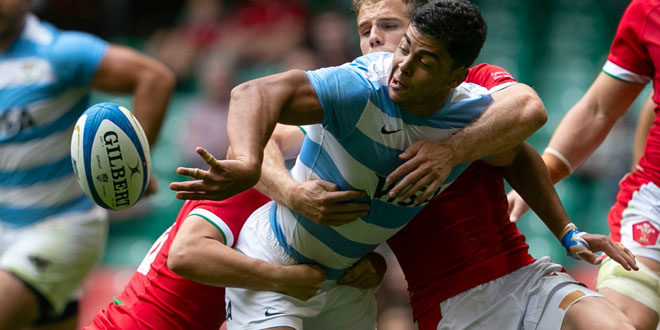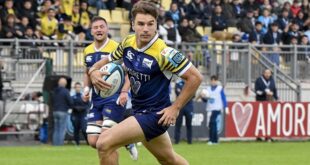Argentina must start Santiago Chocobares. The 22-year-old brings a new dimension of play to the Argentine mid-field; he is the type of center that Argentina has not had recently or at all during the professional era.
Pumas centers have come in a variety of forms. The most capped Pumas centers offer examples of the diverse nature of the players. Felipe Contepomi (87 caps) and Lisandro Arbizu (86 caps) played a lot in the mid-field as did Diego Cuesta Silva (65 caps).
Contepomi and Arbizu were fly halves who played where the team needed them. In addition to center, Cuesta Silva won caps at wing and fullback. In other words, the three Pumas were hybrid players rather than specialist centers.
There are many other Pumas who classify as hybrid centers. Santiago Fernández played center and fly half at RWC 2011 and Marcelo Bosch permanently moved to outside center from fly half via fullback while playing for Biarritz.
A contemporary example is Matías Moroni. He is a natural outside center that started on the wing for Argentina at RWC 2019. The needs of the team were again at the forefront of this decision.
There is no question that Argentina benefited from moving players to the mid-field. For instance, the goal-kicking Contepomi was among the best players at RWC 2007; moreover, it worked for the team with Juan Martin Hernández playing fly half and Ignacio Corleto fullback. Another example is that of Bosch who was had an excellent all-round play with his linking and cover defense giving Argentina an edge.
Since RWC 2015 the centers have mostly been orthodox. That is to say Jerónimo de la Fuente, Matías Orlando and Matías Moroni are specialist mid-fielders rather than hybrid players. de la Fuente and Moroni started together against Romania and Wales in the two matches thus far this month.
A first half injury against Wales saw a reconfiguration in the backline. Starting winger Santiago Carreras was replaced by Santiago Chocobares. This saw Moroni playing wing, de la Fuente moving to outside center and Chocobares playing inside center.
It gave Argentina a new dimension to their play; Chocobares in the backs asks more questions of the opposition’s defense. Argentina’s second try was from a set-move. Chocobares was first receiver from a scrum. He targeted the Welsh fly half and, in part, scrum-half. His targeted run had de la Fuente on his shoulder. Chocobares took the tackle while off-loading for de la Fuente to finish unimpeded.
https://twitter.com/despuesdeltry/status/1413939787195682817?s=20
Chocobares also added to Los Pumas’ defensive game. This was not small achievement; de la Fuente is well noted for his tackling. The same is true of Matías Orlando. They are hard-hitting defenders as is Chocobares. His tackle on Welsh captain Jonathan Davies left its mark.
The two examples demonstrate a style of play that Argentina has often played against but not possessed. The ability to force back the defense and to create opportunities through the middle make the opposition mark the player closely. This can have the outcome of freeing up opportunities out wide for wingers and fullbacks to score from. This is All Blacks 101.
Mario Ledesma has been vocal in wanting hard-hitting and reliable mid-field defenders. His style of coaching suits such a strategy. Yet, it can have the result of decreased play-making opportunities. There is no Felipe Contepomi at inside center, and thus, the potential for static play. This is why Chocobares must start for Argentina. His style is multi-dimentional. Toulouse did not sign him without longterm intentions.
 Americas Rugby News Rugby news from across the Americas!
Americas Rugby News Rugby news from across the Americas!




